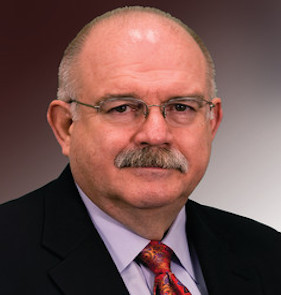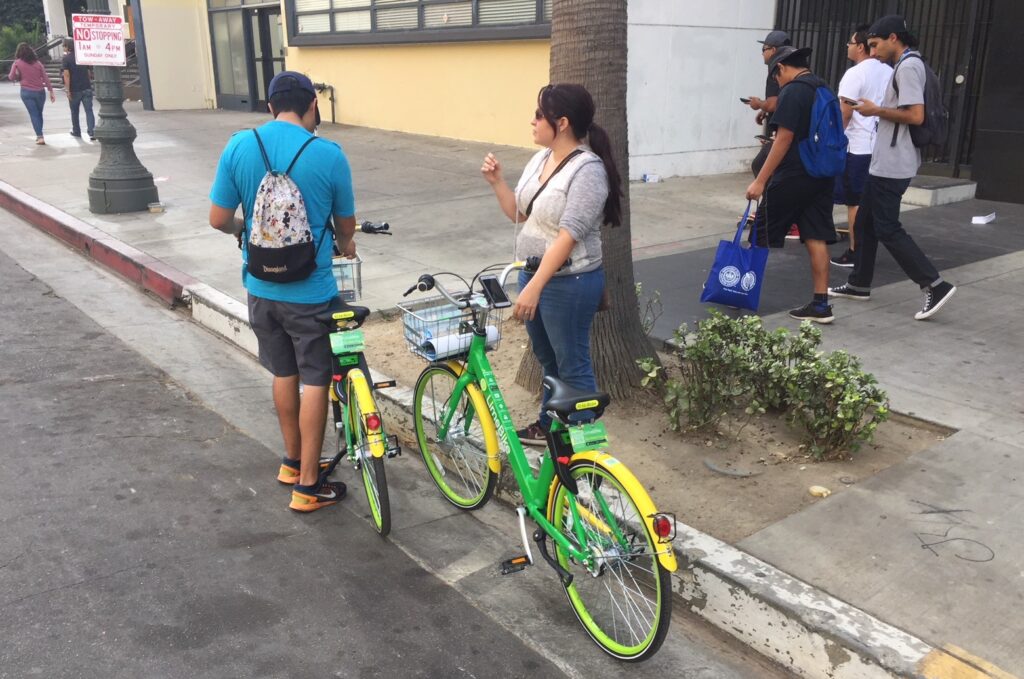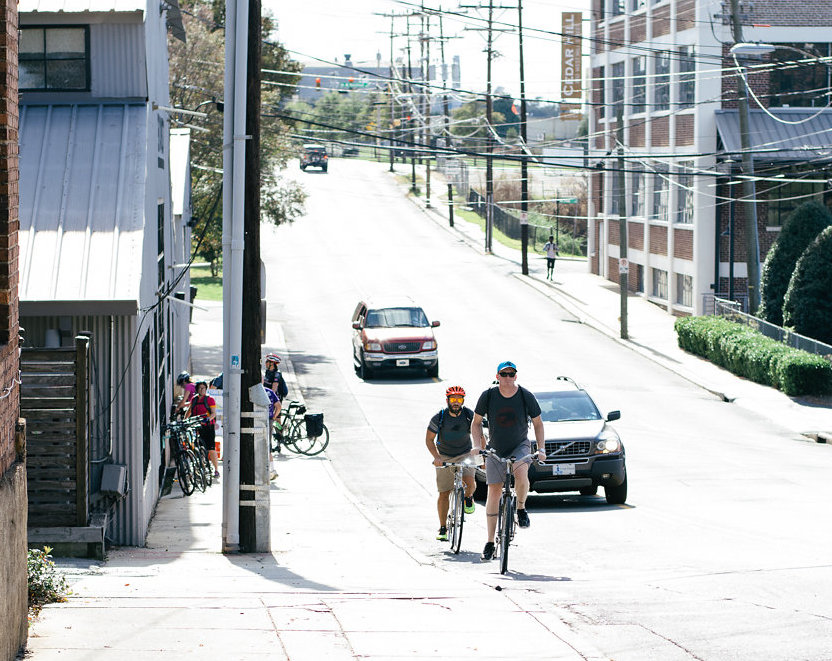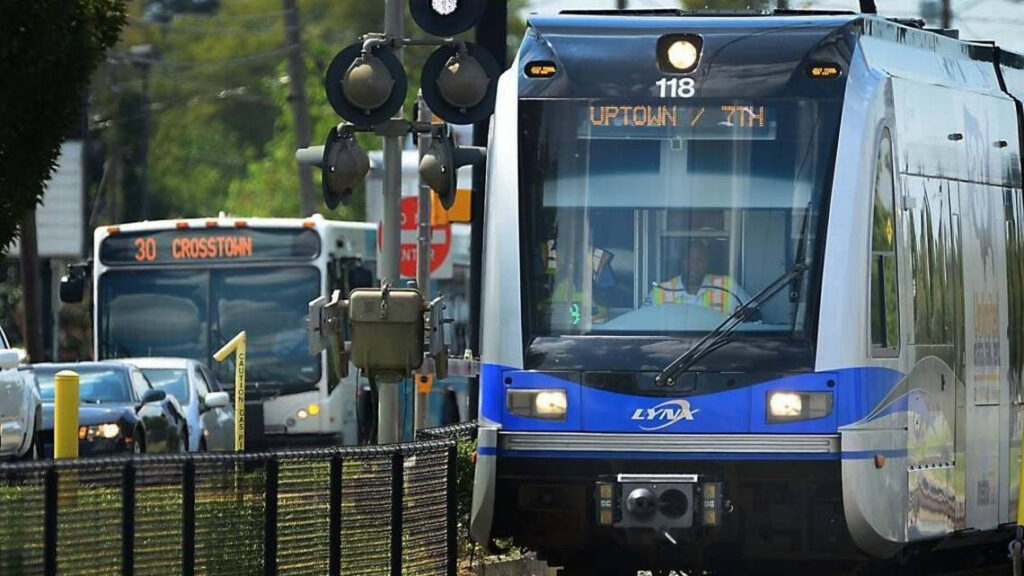The good, the bad, the possibilities: local transportation
Today we’re launching a new 8-part series of weekly blog posts called “The Good, the Bad, the Possibilities”. For this series, we are asking local experts three questions to give you a quick overview of recent local trends and solutions, with respect to a range of important issues that affect our community’s sustainability. Our first topic is transportation, and our two featured experts are Ron Tober and Dan Gallagher.

Ron Tober

Dan Gallagher
Ron is a current Sustain Charlotte board member and served as the first CEO of CATS, where he oversaw the expansion of public transit service and the construction of the first light rail line in Charlotte. He has spent his entire career working in the field of public transportation serving as CEO of two other transit agencies in Cleveland and Seattle as well as holding senior management positions at agencies in Boston and Miami. He chose the field of public transit in order to help people improve the quality of their lives, particularly in America’s urban areas.
Over the last 25 years, Dan has worked to integrate land use and transportation for citizens in Orlando, Florida and Charlotte, North Carolina. As CDOT’s Deputy Director, Dan helps lead a transportation department that is tasked with making Charlotte the premier city in the nation for integrating land use and transportation choices. Dan is passionate about making Charlotte a more walkable, livable and bicycle-friendly community.
With regard to local transportation, over the past few years:
What are 2-3 positive trends or developments you’re seeing in our community?
Ron:
“Growing acceptance of transit and pedestrian development by developers and financiers. The Blue Line has proven that there is a [transit] market to be addressed. Even some of the new suburban developments along I-485 are being designed to be more walkable, although they are still sprawl to me.”
“[The] high level of community participation we’ve experienced in the CATS corridor studies underway. People are very interested in seeing more travel choices offered, particularly by the transit system.”
“[There is a ] growing focus on creating affordable housing, particularly in the current built-up environs that can be better served by transit options.”
Dan:
“Members in our community now expect all of the multimodal elements of complete streets to be included in new and improved streets. Many members of our community also have an openness and interest in a greater variety of transportation options.”
“The market demand for walkable car-lite housing choices that support “live, work, play” places throughout our city is positive for transportation, the natural environment, and the overall quality of life of our community. This trend has occurred all across the country, but is especially true in fast growing cities like Charlotte.”
“Technology in the transportation arena is vastly and rapidly improving how we travel and how we choose to travel. Just in the past few years the market has created choices like:
- Bikesharing – B-cycle and the dockless companies (now electric scooters as well)
- Carsharing – Zipcar and others
- Ridesourcing – Uber, Lyft, etc.
- Mobile apps that compare travel choices – Google Maps, Waze, etc.
- Electric vehicles – creates more sustainable vehicles with fewer emissions
- Autonomous vehicles – changing the way drivers interact with the transportation network with the potential for significant safety improvements”
“The past few years have also brought an increased number of community conversations, advocacy and dialogue surrounding the issues of transportation and quality development. These conversations are being led by organizations like Sustain Charlotte, neighborhood groups, and leaders in the development industry as the market shifts to more walkable places. Having more people at the table for these conversations leads to stronger community engagement and a shared vision for the future of our city.”

What are 2-3 negative trends or developments?
Ron:
“[We’re seeing a] decline in bus ridership. [This is] driven by many factors but, to me, particularly by the growing unattractiveness of bus service – slow, unreliable and unavailable for many types of trips. People prefer rail service because they see it as faster and more reliable, although it is limited in what types of trips it can serve.”
“New developments along I-485, which add to sprawl and are tough to accommodate by alternative travel options.”
“[There is a] lack of political support for addressing climate change and developing alternative travel options, particularly by the state legislature.”
Dan:
“The most unacceptable negative trend of the past few years is the rising numbers of bicyclists and pedestrians being killed or severely injured in and around Charlotte. Twenty-seven pedestrians and 4 bicyclists were killed walking and biking Charlotte’s streets in 2017.”
“Rising housing and transportation costs for those that do not live in car-lite lifestyle areas. While market demand is high, there is still a huge deficit of affordable housing – particularly in areas close to employment and well served by high quality transit and other transportation choices. The need for many to “drive until you qualify” (moving far away from the urban core for housing affordability) almost always requires the use of a car. This limits sustainable travel choices and creates a significant household expense.”
“With a booming construction industry fueled by rapid growth, the associated costs to acquire right of way and construct projects is also rising. Construction costs have been rising by about 10% each year in recent years. The increase in development and project construction also increases demand for both the materials and services. This unfortunately reduces our ability to deliver the same quantity of projects for a given funding level.”
What solutions would help reverse the negative trends/developments?
Ron:
“On bus ridership – develop a multi-part action plan to address the decline, something John Lewis and I have discussed, including: Completing the CATS Envision MYRide initiative, development of plans to speed up bus service on major travel corridors and offer new fast, reliable service to rapidly developing areas (i.e., Route 16/Brookshire corridor to the northwest), and revamping CATS customer facing activities, such as a new rider trip planning app, and perhaps revamping the fare structure and collection procedures.”
“Increased communication efforts to better educate the public and elected officials, and develop a regional coalition that is focused on sustainability as the key to equitable and continuing growth in the region.”

Dan:
“A consistent and increased level of dedicated transportation funding could help towards providing more complete streets and safety-related improvements throughout all areas of our city.”
“A robust and dedicated Vision Zero program can also assist in developing a culture shift towards focusing on safety and working towards the shared goal of eliminating deaths and severe injuries on Charlotte’s streets – this will require a lot of work and dialogue associated with Engineering, Education and Enforcement within our community.”
“Autonomous vehicle technology has been talked about a lot in the past few years – and there is still much debate about both the positive and negative impacts of this. As the technology improves there are definitely potential safety benefits but there is still disagreement among transportation industry experts about what the true impacts will be on VMT (Vehicle Miles Traveled), parking, and the interaction between vehicles, bicyclists and pedestrians. Other technology advances such as smart infrastructure (cameras, sensors, lighting, etc.) will continue to provide opportunities for safety improvements.”
Check back next week for more interviews with sustainability experts.
Thanks for reading!
As a nonprofit, community support is essential for us to keep doing what we do — including providing free articles like this. If you found this article helpful, please consider supporting Sustain Charlotte.
Want to stay in the loop? Subscribe to our weekly newsletter and follow us on Instagram, Facebook, and Twitter.

